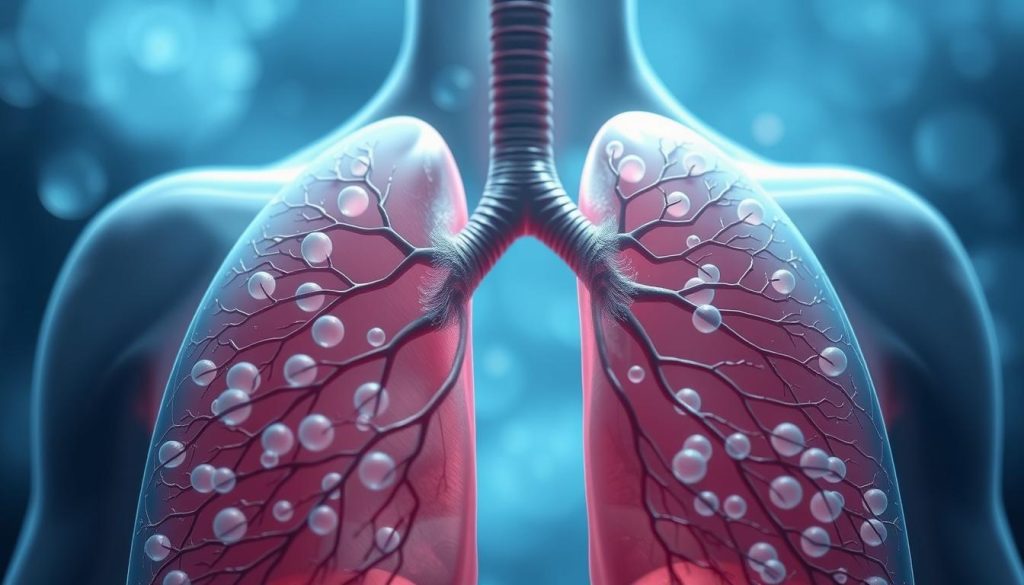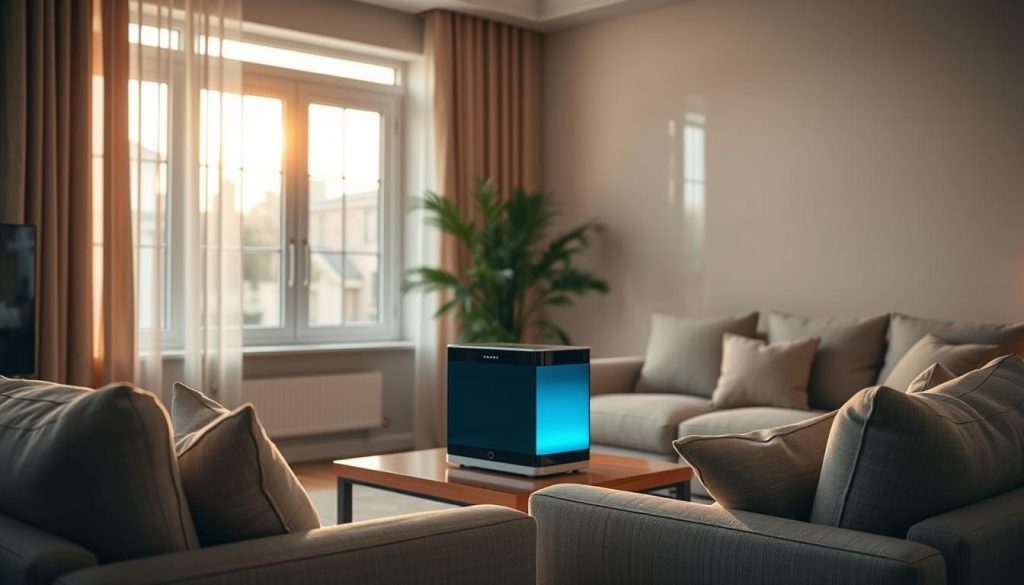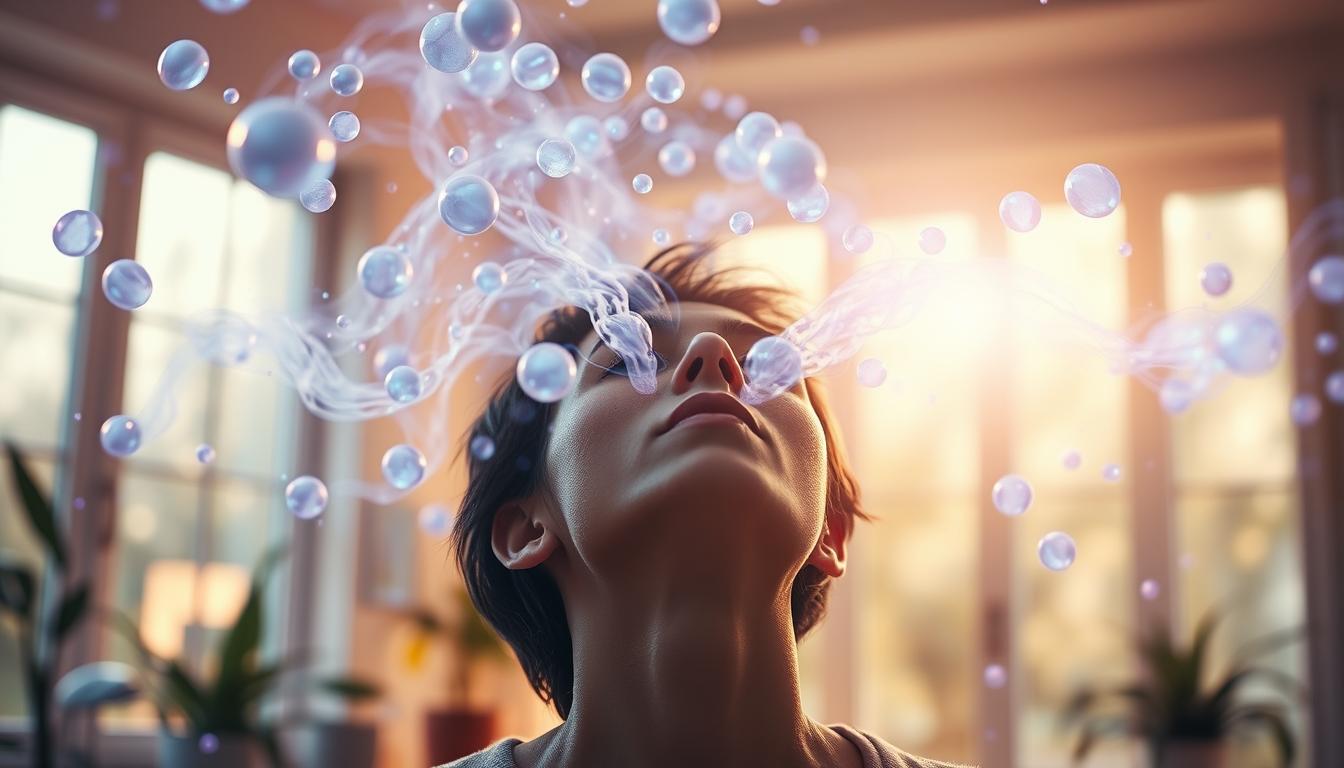Do you struggle with respiratory issues or simply want to breathe easier? The secret to improved respiratory health may lie in the power of negative ions. These tiny particles found in nature can provide a range of benefits for your lungs and overall well-being.
Negative ions are known for their ability to purify the air by reducing allergens and other airborne pollutants. By incorporating negative ion generators or spending time in nature, you can unlock the potential of these beneficial particles to support better lung function and respiratory health.
Discover how negative ions work and the science behind their air purification properties. Learn about the natural sources of negative ions and how they can help alleviate symptoms of respiratory conditions. Embrace the power of negative ions to breathe easier and enhance your quality of life.
What Are Negative Ions and How Do They Work?
Have you ever experienced the refreshing feeling of breathing in the air near a waterfall or at the beach? That invigorating sensation is partially due to the presence of negative ions in the environment. Negative ions are tiny molecules that have gained an extra electron, giving them a negative charge. These charged particles play a crucial role in purifying the air and promoting overall well-being.
Understanding the Science Behind Negative Ions
Negative ions are created through various natural processes, such as the movement of water, the interaction of cosmic rays with the atmosphere, and the photosynthesis of plants. When an air molecule gains an additional electron, it becomes a negative ion. These ions then attract positively charged particles, such as dust, pollen, and other pollutants, effectively removing them from the air we breathe.

The concentration of negative ions in the air can vary greatly depending on the environment. Here’s a table comparing the typical negative ion levels in different settings:
| Location | Negative Ions per Cubic Centimeter |
|---|---|
| Indoor urban environments | 100-500 |
| Outdoor urban environments | 500-1,000 |
| Rural areas | 1,000-5,000 |
| Waterfalls and beaches | 10,000-50,000 |
The Natural Sources of Negative Ions
Nature provides an abundance of negative ions, and certain environments are particularly rich in these beneficial particles. Some of the most notable natural sources of negative ions include:
- Waterfalls and moving water
- Ocean waves and beaches
- Forests and green spaces
- Mountains and high altitudes
- Thunderstorms and lightning
Spending time in these environments can help you harness the power of negative ions and experience their positive effects on your respiratory health and overall well-being. In the next section, we’ll explore the specific benefits negative ions offer for respiratory health.
The Benefits of Negative Ions for Respiratory Health
Negative ions offer a range of benefits for respiratory health, making them a valuable ally in the fight against airborne pollutants, allergens, and respiratory conditions. By understanding how negative ions work and incorporating them into your daily life, you can breathe easier and enjoy improved overall well-being.
Reducing Airborne Pollutants and Allergens
One of the primary benefits of negative ions is their ability to reduce airborne pollutants and allergens. When negative ions encounter particles such as dust, pollen, pet dander, and smoke, they attach to these particles, causing them to become heavier and fall to the ground. This process effectively removes these irritants from the air, creating a cleaner and healthier breathing environment.
The following table illustrates the effectiveness of negative ions in reducing common airborne pollutants:
| Airborne Pollutant | Reduction with Negative Ions |
|---|---|
| Dust | Up to 85% |
| Pollen | Up to 75% |
| Pet Dander | Up to 80% |
| Smoke | Up to 95% |
Improving Lung Function and Capacity
In addition to reducing airborne irritants, negative ions can also help improve lung function and capacity. Studies have shown that exposure to negative ions can increase the flow of oxygen to the lungs, enhance the lungs’ ability to absorb oxygen, and strengthen respiratory muscles. This improved lung function can lead to better overall respiratory health and increased endurance during physical activities.

Alleviating Symptoms of Respiratory Conditions
For those suffering from respiratory conditions such as asthma and allergies, negative ions can provide significant relief. By reducing the presence of triggers like allergens and pollutants in the air, negative ions can help minimize the frequency and severity of asthma attacks and allergy symptoms. Additionally, the improved lung function associated with negative ion exposure can help individuals with respiratory conditions breathe more easily and manage their symptoms more effectively.
Negative Ion Benefits for Respiratory Health
Enhancing your indoor air quality is crucial for maintaining optimal respiratory health, and negative ion therapy offers a natural and effective solution. By incorporating air purifiers, ionizers, and salt lamps into your living spaces, you can harness the power of negative ions to breathe easier and feel better.
Air purifiers equipped with ionizers generate negative ions that attach to airborne pollutants, allergens, and dust particles, causing them to become heavier and fall to the ground. This process effectively removes these irritants from the air you breathe, reducing the burden on your lungs and minimizing respiratory issues.
Salt lamps, crafted from natural Himalayan salt crystals, emit negative ions when heated by the bulb inside. Placing these lamps in your bedroom, living room, or office can help to purify the air and create a more calming atmosphere. The soft, warm glow of the salt lamp also promotes relaxation, which can be beneficial for those with respiratory conditions exacerbated by stress.
Incorporating negative ion therapy into your daily life is simple and can yield significant benefits for your respiratory health. By using air purifiers, ionizers, and salt lamps strategically throughout your home and workspace, you can create an environment that supports better breathing and overall well-being.
Incorporating Negative Ions into Your Daily Life
Harnessing the power of negative ions for better breathing and overall well-being is easier than you might think. By making a few simple changes to your daily routine, you can significantly increase your exposure to these beneficial particles and enjoy the many health benefits they offer.
Using Negative Ion Generators at Home and Work
One effective way to boost the concentration of negative ions in your living and working spaces is by using negative ion generators. These devices work by electrically charging air molecules, producing a stream of negative ions that can help purify the air and promote a healthier indoor environment. When choosing a negative ion generator for your home or office, consider factors such as room size, portability, and additional features like air filtration.

To maximize the benefits of your negative ion generator, place it in areas where you spend the most time, such as your bedroom, living room, or workspace. Keep the device well-maintained by regularly cleaning or replacing the filters as needed, ensuring optimal performance and air quality.
Spending Time in Nature to Boost Negative Ion Exposure
Another excellent way to increase your exposure to negative ions is by spending more time in nature. Outdoor activities like hiking, camping, or simply walking in a park can provide an abundance of fresh air and naturally-occurring negative ions. Some of the best natural sources of negative ions include:
- Waterfalls and running water
- Beaches and coastlines
- Mountains and forests
- Gardens and parks
Incorporating regular outdoor activities into your routine can not only boost your exposure to negative ions but also improve your overall physical and mental well-being. Aim to spend at least 30 minutes in nature each day, whether it’s a morning walk, a lunchtime stroll, or an afternoon hike.
| Activity | Time Spent (Daily) | Negative Ion Exposure |
|---|---|---|
| Using a Negative Ion Generator at Home | 8-10 hours | High |
| Using a Negative Ion Generator at Work | 6-8 hours | High |
| Hiking in Nature | 1-2 hours | Very High |
| Walking in a Park | 30-60 minutes | Moderate to High |
By combining the use of negative ion generators in your home and work environments with regular outdoor activities in nature, you can significantly increase your exposure to these beneficial particles and experience the many positive effects they have on your respiratory health and overall well-being.
The Role of Negative Ions in Overall Well-being
While negative ions are well-known for their positive impact on respiratory health, their benefits extend far beyond the lungs. Exposure to negative ions can significantly contribute to overall well-being, improving mood, reducing stress, boosting energy levels, and enhancing productivity.

Enhancing Mood and Reducing Stress
Negative ions have been shown to have a profound effect on mood and stress levels. Studies have found that exposure to negative ions can help alleviate symptoms of depression and anxiety, promoting a sense of calmness and relaxation. By reducing the levels of stress hormones in the body, negative ions can help individuals feel more balanced and emotionally resilient.
In a study conducted by Columbia University, researchers found that negative ion exposure resulted in a 20-30% reduction in symptoms of seasonal affective disorder (SAD), a type of depression linked to changes in seasons. This highlights the potential of negative ions in supporting mental health and overall well-being.
Boosting Energy Levels and Productivity
In addition to their mood-enhancing effects, negative ions can also help boost energy levels and improve productivity. When exposed to negative ions, individuals often report feeling more alert, focused, and motivated. This increased mental clarity and vitality can lead to better performance at work, school, or in personal pursuits.
A study published in the International Journal of Molecular Sciences found that negative ion exposure improved cognitive performance, reaction time, and attention span in participants. By enhancing brain function and mental acuity, negative ions can contribute to greater productivity and overall well-being.
Incorporating negative ions into daily life, whether through natural sources or negative ion generators, can have a profound impact on mental health and general wellness. By reducing stress, improving mood, and boosting energy levels, negative ions offer a natural and effective way to support overall well-being and lead a more balanced, productive life.
Frequently Asked Questions About Negative Ions and Respiratory Health
If you’re curious about how negative ions can benefit your respiratory health, you’re not alone. Many people have questions about these tiny particles and their potential to improve air quality and lung function. Here are some of the most common FAQs about negative ions and respiratory health.
One frequent question is whether negative ion generators are effective at purifying indoor air. The answer is yes – these devices can significantly reduce levels of allergens, pollutants, and other airborne irritants that can trigger respiratory issues. By releasing a steady stream of negative ions, they help cleanse the air you breathe for easier, healthier respiration.
Another common inquiry is how negative ions work to support lung function. Essentially, these particles attach to positively charged contaminants in the air, weighing them down so they fall to the ground and out of the breathing zone. This leaves the air cleaner and your lungs less prone to inflammation and irritation that can impair respiratory function over time. So the more you expose yourself to negative ions, the greater potential benefit for your lung capacity and overall respiratory health.

